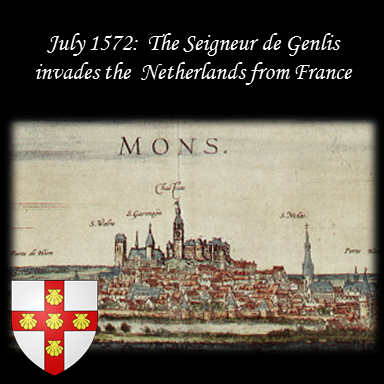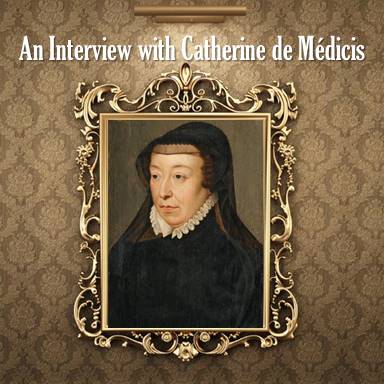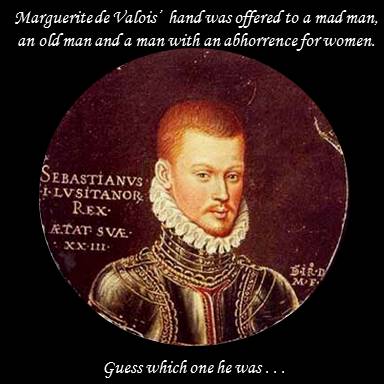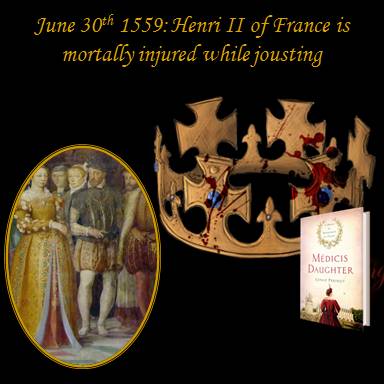Category: Medicis Daughter
A Handy Holiday Catalog of My Books for Giving [2016 Edition]
I am downsizing our gift-giving around here this year but that does NOT mean I am not buying books! SEVEN arrived this weekend alone. Some for stocking-stuffers, some to give friends who I think will enjoy them as much as I did.
In honor of CYBER MONDAY Barnes & Noble is running a 15% off your entire order promo (today only). The code is BNCYBER16 
If you’d like to give a little Perinot this season, here are the brief descriptions and links for my titles at both B&N (use that coupon code!) and Amazon. Of course the novels are also available at your neighborhood bookstore!
MÉDICIS DAUGHTER (B&N) (AMAZON)
Winter, 1564. Beautiful young Princess Margot is summoned to the court of France, where nothing is what it seems and a wrong word can lead to ruin. Known across Europe as Madame la Serpente, Margot’s intimidating mother, Queen Catherine de Médicis, is a powerful force in a country devastated by religious war. Among the crafty nobility of the royal court, Margot learns the intriguing and unspoken rules she must live by to please her poisonous family.
Eager to be an obedient daughter, Margot accepts her role as a marriage pawn, even as she is charmed by the powerful, charismatic Duc de Guise. Though Margot’s heart belongs to Guise, her hand will be offered to Henri of Navarre, a Huguenot leader and a notorious heretic looking to seal a tenuous truce. But the promised peace is a mirage: her mother’s schemes are endless, and her brothers plot vengeance in the streets of Paris. When Margot’s wedding devolves into the bloodshed of the St. Bartholomew’s Day Massacre, she will be forced to choose between her family and her soul.
THE SISTER QUEENS (B&N) (AMAZON)
Like most sisters, Marguerite and Eleanor were rivals. They were also queens.
Raised together at the 13th Century court of their father, Raymond Berenger, Count of Provence, Marguerite and Eleanor are separated by royal marriages—but never truly parted.
Patient, perfect, reticent, and used to being first, Marguerite becomes Queen of France. Her husband, Louis IX, is considered the greatest monarch of his age. But he is also a religious zealot who denies himself all pleasure—including the love and companionship his wife so desperately craves. Can Marguerite find enough of her sister’s boldness to grasp her chance for happiness in the guise of forbidden love?
Passionate, strong-willed, and stubborn, Eleanor becomes Queen of England. Her husband, Henry III, is neither as young nor as dashing as Marguerite’s. But she quickly discovers he is a very good man…and a very bad king. His failures are bitter disappointments for Eleanor, who has worked to best her elder sister since childhood. Can Eleanor stop competing with her sister and value what she has, or will she let it slip away?
A DAY OF FIRE (AMAZON)
Pompeii was a lively resort flourishing in the shadow of Mount Vesuvius at the height of the Roman Empire. When Vesuvius erupted in an explosion of flame and ash, the entire town would be destroyed. Some of its citizens died in the chaos, some escaped the mountain’s wrath . . . and these are their stories:
- A boy loses his innocence in Pompeii’s flourishing streets.
- An heiress dreads her wedding day, not knowing it will be swallowed by fire.
- An ex-legionary stakes his entire future on a gladiator bout destined never to be finished.
- A crippled senator welcomes death, until a tomboy on horseback comes to his rescue.
- A young mother faces an impossible choice for her unborn child as the ash falls.
- A priestess and a whore seek redemption and resurrection as the town is buried.
Six authors bring to life overlapping stories of patricians and slaves, warriors and politicians, villains and heroes who cross each others’ path during Pompeii’s fiery end. But who will escape, and who will be buried for eternity?
It’s Time to Fall for the Valois
Hard!
Introducing “Tales from the Valois Court” My New Video Series!
Yes, it is true, I am dipping my toe into the wonderful world of video production and Youtube channels! Some of you have already visited my channel to watch my book trailer and other items. But today I bring you the first installment of a series–Tales from the Valois Court.
Enjoy! And do take a minute to let me know what you think!
Historical Tidbits Part II
My countdown of the weird, wild and wonderful of the late Valois era continues. Part II of my video series of historical tidbits is now complete. Enjoy! And, as always, if you want more (much more) Valois Court intrigue, pick up a copy of Medicis Daughter.
Because History is So Much Stranger Than Historical Fiction
I am constantly reminded that quite often the strangest things that are included in my books–the ones that cause readers to send me notes saying “really Sophie? really?” are NOT details that I created, but rather those that are historically verifiable. In the case of the French Valois court there were many historical tidbits that caused me to do a double-take, some of which made the finished novel, Médicis Daughter, and some of which didn’t.
Knowing that many of my faithful readers are as likely to geek out over these dramatic goodies as I was, I am creating a two part countdown of ten of the juiciest, weirdest, historical tidbits from my research into 16th century Valois France. Below is Part I. Enjoy!
Brand New Médicis Daughter Trailer!
Welcome to the world premier of the Médicis Daughter book trailer. I’d love to hear what you think . . . does it capture the essence of the novel?
A Little Invasion and some Big Questions . . .
In mid-July of 1572 a French Huguenot nobleman, the Seigneur de Genlis, invaded Netherlands from France with 4,000 infantry and slightly less than 1,000 Calvary. It went badly. Don Frederic of Toledo routed the Seigneur and his troops at Quiévrain, and not two hundred Frenchmen survived (those who survived the battle proper where quickly slaughtered by local peasants). Gossip and fallout at the French Court was immediate.
A good number of courtiers and foreign figures (for example the Venetian ambassador) were sure Genlis had been sent by Admiral Coligny with the King’s knowledge. Others avowed, adamantly, that the Seigneur had gone without the knowledge or permission of either the King or the Admiral.
Frankly, and after years researching the Valois Court in this era, it is impossible for me to believe that the King did not at least know of Seigneur de Genlis’ plan in advance, whether or not he tacitly approved it, if for no other reason than the planned invasion was a very open secret at French Court. So much so that Spain caught wind of it making for an easy interception of the French near mons. Additionally, a letter evidencing Charles complicity found on Genlis when was taken prisoner.
Yet confronted with the invasions catastrophic failure, Charles denied that he sanctioned the expedition and congratulated Philip II on his victory. This represented more than a desperate effort to distance himself from a plan run amok. His actions were at his mother Catherine de Médicis’ behest and she also demanded that he declare publicly that his subjects had disobeyed his orders in going to Flanders. All of this suborning of what was basically perjury was part of a larger struggle between the Queen Mother and Admiral Coligny for the role of chief-influencer over Charles. War with Spain was on the table and while Coligny pressed for it, Catherine was against it.
Less than two months later the winner and loser of this struggle would become painfully and bloodily clear.
An Interview with Catherine de Medicis: Spending Time as one of the 16th Century’s Most Powerful Queens
Part of being a writer is slipping into other skins.
While the point-of-view character for my most recent novel, Médicis Daughter, is the youngest Valois Princess, Marguerite, her mother Catherine de Médicis plays a vital role in the story (often as Margot’s antagonist). That meant getting in Queen Catherine’s head and trying to understand her psyche.
Recently I was invited to go back to that sometimes dark but always interesting place, and be Catherine in a character interview for Erin of Flashlight Commentary. As we wandered through the gardens of one of Catherine’s favorite properties, Château de Montceaux, Erin asked some very thought provoking questions. I hope everyone enjoys my answers on behalf of this powerful, crafty Queen.
Of course for more of Catherine and the entire dysfunctional Valois clan, you only need to pick up Médicis Daughter.
Another Prospective Groom . . .
The first mention of a match between Marguerite de Valois and Dom Sebastian, King of Portugal, dates back to the reign of Francis II, when the French Ambassador at Lisbon sent Dom Sebastian a portrait of the young Margot. Nothing came of those efforts though and other grooms—as readers of Médicis Daughter know—were subsequently proposed for the youngest Valois Princess.
In July of 1569, however, SERIOUS negotiations re-opened for a marriage between Margot and the young (17) king of Portugal. Fourquevaux (the French Ambassador in Spain) received necessary powers conclude a treaty with Philip II (the King of Portugal’s Uncle) who exercised a protectorate of sorts over his nephew’s kingdom. 
Unfortunately for Margot, like some of her previous prospective grooms, the Portuguese King, while undeniably handsome and powerful, appears to have been seriously flawed. In the first instance he had been reared by a pair of monks who appear to have made him into a serious misogynist. Additionally, Catherine’s ambassadors quickly informed her her that doctors seemed to believe the young man would not live long and that there is some question as to “whether he was ‘of any use to have children.”
None of this dissuaded Catherine de Médicis from pursuing the match however because . . . well . . . there was that power thing.
At first Spanish king also seemed disposed towards the marriage and Pope Pius V was very happy with the idea (as he desired to see a stronger union between the Catholic powers so they could battle the Turks AND the Protestant powers together). The Dowager Queen of Portugal, however, had a preference for marrying her son to an Austrian Archduchess.
Ultimately Dom Sebastian didn’t live long enough to marry anyone and Margot ended up with a groom even less to her liking.
